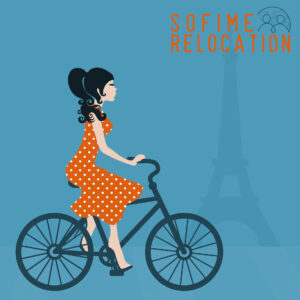… en comptant sur ses gambettes?
Victoire pour les uns, pilule difficile à avaler pour les autres, il faut prendre acte de cette nouvelle donne. Bientôt, nous ne pourrons plus circuler en voiture.
 Chez SOFIME Relocation, nous prenons les devants afin de composer avec cette dynamique, et rebondir pour accélérer notre transition verte ! Pourquoi ne pas profiter de cette opportunité (et du réseau déjà bien fourni de pistes cyclables) pour emmener nos expats en visite à bicyclette ou trottinette et faire travailler nos gambettes ?
Chez SOFIME Relocation, nous prenons les devants afin de composer avec cette dynamique, et rebondir pour accélérer notre transition verte ! Pourquoi ne pas profiter de cette opportunité (et du réseau déjà bien fourni de pistes cyclables) pour emmener nos expats en visite à bicyclette ou trottinette et faire travailler nos gambettes ?
Il y aura bien sûr un certain nombre de cases à cocher avant de se lancer dans l’aventure : accord de l’entreprise et du client, météo favorable, distances acceptées entre les visites d’appartements.
Et les non sportifs?! SOFIME Relocation y pense. Au-delà du fait que le vélo ou la trottinette électrique font des miracles sur les cuisses non entrainées, nous pourrons nous appuyer sur le réseau de transports en commun. Car Paris est quand même la ville la mieux desservie au monde selon un classement de 2016 de l’Institute for Transportation and Development Policy (ITDP, basé à New York); ou bien sur les innombrables chauffeurs et taxis que compte notre belle capitale. Ou encore, pourquoi ne pas faire confiance à nos pieds, qui sont les plus naturellement placés pour se mouvoir d’un point à un autre ?!
Chez SOFIME Relocation, il n’y a pas de problème, il n’y a que des solutions !
Votre avis compte ! N’hésitez pas à nous faire part de vos suggestions !






Commentaires récents